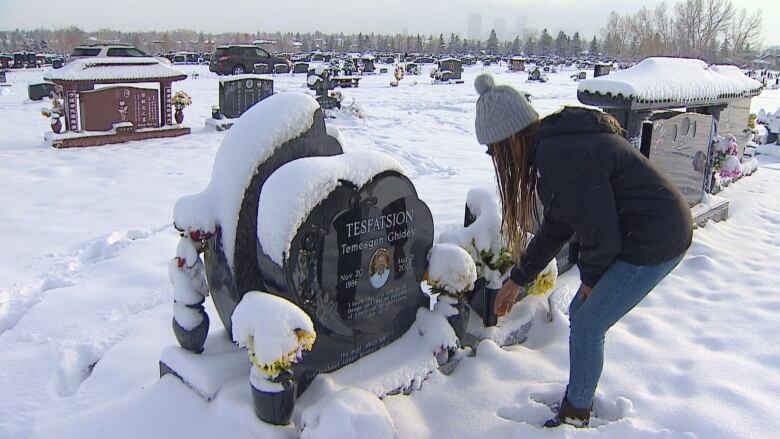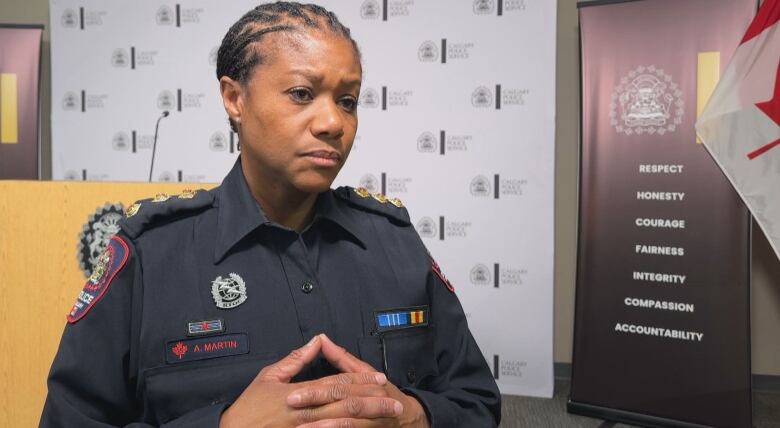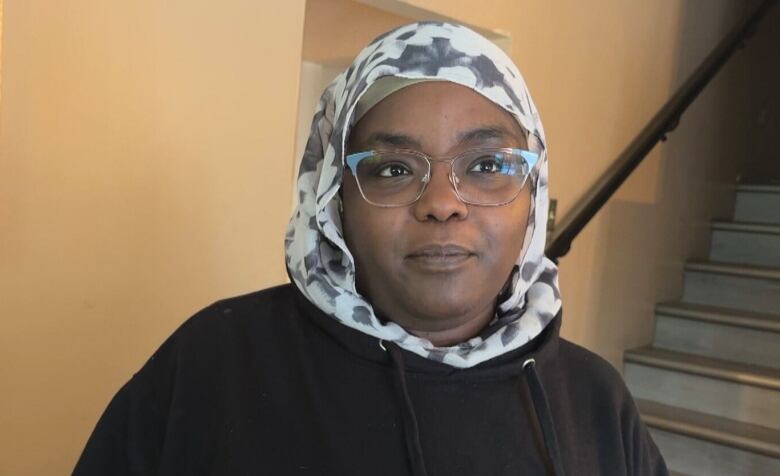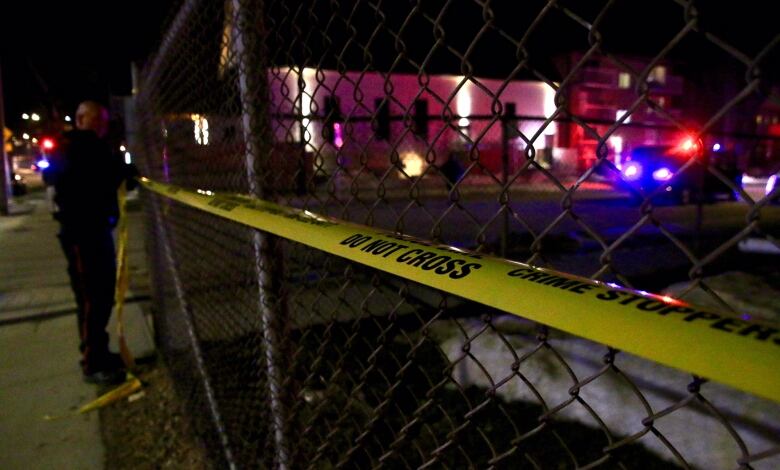He was shot in a restaurant. It took 10 days to issue a warrant. That's when doubt crept in
When people didn't understand the delay, they started todoubt if police really cared, says Meron Tesfatsion

This is Part 1of a CBC Calgary look at building trust between police and Black communities.Part 2:Four years ago, Black Lives Matter protesters demanded change. Here's where Calgary police are at now
Meron Tesfatsion saw the moment when her community's faith in police began to slip away.
Her brother Temesgen was a bystander shot in a restaurant 18 months ago and there were witnesses who gave statements that day. But after a week, the Calgary Police Service still hadn't issued a warrant for the suspect'sarrest, and rumours began to circulatein the community that he had fled to Africa.
Those witnesses stopped connecting with her family. Several turned up on her family's front lawn to apologize.
"They start telling us, we really want to help. But you know, we are afraid for ourselves, too. If we give information, if something happens, we don't want to be in trouble."
When shootings happen in neighbourhoods across Calgary, police often appeal to the public for help: Someone saw something, someone knows something come forward and share those details with police.
But community members aren't always willing to engage. It takes trust.


After Temesgen was shot, it took 10 days for police to publicly name Filimon Asmelash Asfiha and charge him with second-degree murder. He still hasn't been arrested. Andeven though Meronsays the detectives tried to explain the delay as stemming from Canadian law, her doubts linger. Why didn't police release the name and close the borders against him?
She says she can't help feeling like the death would have been treated differently if it wasn't a Black victim. She's originally from Eritrea, so that idea makes her feel like an outsider, and like she can't trust any officials here.
"If anything happens, I don't think I will run to the police. I will try to solve it by myself firstbecause I don't feel supported. I didn't get that when I really needed it the most," she said. "I've been here for more than 10 years. I believed the system. At the beginning, I had faith in the system, but not anymore."
When Calgary saw another rash of shootings last fall, CBC Calgary turned to community leaders in our local East African community project and asked them: What causes the lack of trust?
They listed specific incidents where they feel police actions weren't right: when Latjor Tuel, a former child soldier, was shot during a mental health crisis in 2022, when another young man shot by an undercover police officer in 2018 in Bridgeland, and when the 14- and 18-year-old brothers saw murder charges laid and withdrawn last November.
In addition, relationships are damaged in less dramatic ways, said Jean-Claude Munyezamu, leader of the non-profit Umoja Community Mosaic, one of several partners in the East African project.
His community lost faith when police didn't follow up as expected when they reported someone recruiting children to a gang, and when his nephew and niece were woken up and hand-cuffed on their front lawn in the middle of the night through a case of mistaken identity.
"These are things that stay in people's memory," he said.
Police Insp. Avril Martin is in charge ofthe community services section, which includes the racial equity office, crime prevention and various outreach teams.
She says communication issues are at the root.
"What neededto change is that open communication, that two-way engagement and making sure that we are authentic when we say we want to increase and build trust with the communities," she said.

But it's not always easy, especially because if officers give out certain information at the wrong time, it could compromise an investigation or a future court case.
"We are working really hard to ensure that our communication is effective," she said. "It's timely, it's transparent and it doesn't actually compromise any investigative steps along the way."
What neededto change is that open communication, that two-way engagement and making sure that we are authentic- Insp. Avril Martin
In the Tesfatsion case, homicide Staff Sgt. Sean Gregson said the community gave information in those early days that helped them identify the suspect. Then they tried to arrest Asfiha, but he eluded them.
They had to work with Crown prosecutors to issuea warrant.
"As in any investigation, the public naming of the suspect can only be completed when the suspect has been arrested and formally charged, or in this case, all avenues of taking the suspect into custody have been exhausted and a warrant has been issued," Gregson wrote in a statement.
He did not say why that took 10 days.
Martin said they're trying to improve communication in cases like this by inviting small groups of people from the affected communities to meet with police for frank conversations.
She said they're also developing partnerships with community organizations and hiring community leaders as civilian employees and community mobilizers. They're reviewing their internal practices with help from an external board of advisors from marginalized communities and trying to empower officers to speak up and be leaders internally if they see practices that would contribute to systemic racism.

Hagir Sail, an engagement professional and consultant for the Calgary African Community Collective, says communication was also a problem last fall, when police charged and then withdrew charges against two teen brothers from one of Calgary's East African communities.
Police said the brothers matched the description from a witness at the scene. They were arrested and sat in jail for a week before someone posted a video of the shooting online, exonerating them.
Police Chief Mike Neufeld issued a public apology. But Sail is frustrated the chief did not meet with their African advisory board.
There was an invite-only meeting in Marlborough, where several East African community leaders believed they would finally get answers. But the meeting was not what they thought, said Sail.The majority of people in the room appeared to be white Marlborough community members concerned about the increase in violent crime, said Sail.
Police met with South Sudanese community leaders in mid-December.Sail's background is North Sudanese and shewas not invited to that meeting.
In her view, police efforts to build partnerships, boards and community liaisons is good. But clear communication during a community crisis is important and missing.
"As soon as you have a specific instance, that's where everything matters. You have a 14-year-old boy whose life is basically on the line. It's a specific instanceand that's when there's the blue line. Everybody falls in line, everybody starts protecting and the lines get tight, right? Everybody has this exact same thing to say."

Munyezamu has another example of where a lack of communication is damagingcommunity trust.
Yassin Osman was a young man who grew up in southwest Calgary, whose siblings played soccer with Munyezamu's organization, Umoja Community Mosaic.
His family originally came from East Africa and he was doing well. He even enrolled in university, Munyezamusaid.
"Everyone in my soccer program knew Yassin. We knew his father, his mother. He was like a brother in the neighbourhood."
Then several years passed, and in 2018, the27-year-old was shot and killed by an undercover police officer outside a house in Bridgeland. The story that circulated throughout the community was that Osmanhad left to get ice cream from the corner store down the street.
The community believes this is another example of an unjustified police shooting.
The kids still believe the police just killed him.- Jean Claude Munyezamu
But there is now more information publicly available, if a person knows where to go looking. TheAlberta Serious Incident Response Teaminvestigated and issued a seven-page reportin 2021.
In that ASIRT report, Osman's roommates tell police he went to get drugs from a nearby convenience store. They said he had a knife and had no money.
The undercover officer said Osman yanked his car door open while he was on break and tried to rob him at knife point. The medical examiner said he had evidence of past drug use on his body, including needle marks in his arm.
But Munyezamu didn't see that report until he shared Osman's name and story with CBC Calgary. We downloaded and forwarded it to him.

"When he died, people were devastated in the community, and as far as I know, the kids still believe the police just killed him. There is no communication," said Munyezamu.
Police and community need to have the same kind of town hall that police offered the Marlborough residents after the fall shooting, he said.
But not just for the Somali community, or the South Sudanese or any one specific ethnic group, he said. Community groups need to resist and push back whenpolice try to do that, and to band together to lobby police for information.
Everyone who knew Osman or was affected by news of his death should be invited.
"They should come to the Glenbrook Community Hall because he grew up here. They should come and say, this is what happened," Munyezamu said.
"Whatever people believe or don't believe it's up to them," he said. "If police come to the community and create that communication, that will give people peace of mind that police did not come to murder him."
For more stories about the experiences of Black Canadians from features on anti-Black racism to success stories from within the Black community check out Being Black in Canada, a CBC project Black Canadians can be proud of.You can read more stories here.













_(720p).jpg)


 OFFICIAL HD MUSIC VIDEO.jpg)
.jpg)



























































































